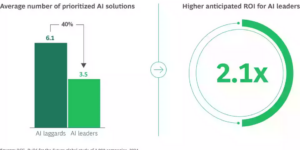With the auto industry on the verge of its self-driving future, insiders and car enthusiasts have been gearing up for a clash of the titans, pitting the lumbering giants of Detroit against the nimble disruptors of Silicon Valley. But a new blockbuster deal between Ford and Google to co-produce autonomous vehicles is the strongest sign yet that the much-anticipated day of reckoning may never come.
When Google first started developing and testing its self-driving car technology, it used modified production vehicles—mostly Toyota Prius and Lexus RX hybrids—to test its laser- based sensing system. But the technology remained something of an oddity, a “science experiment” in the minds of auto industry professionals, until May 2014, when Google revealed its first self-driving prototype. With no human controls of any kind, Google’s “toaster” demonstrated the search-engine giant’s immense ambition: to disrupt traditional auto ownership with an entirely new mobility paradigm that owes nothing to the century of automotive evolution.
In the 18 months since, Google’s boldness has brought self-driving car technology out of the lab and into the public conversation. Combining the promise of push-button mobility with Silicon Valley’s popular narrative of disruption, Google has been running herd on the entire auto industry, pushing century-old companies toward a future that could see demand for cars fall by as much as 40 percent. Now, it seems, Ford has opted out of that game of chicken.
The details of the deal between Google and Ford, first reported last week by Yahoo Autos, remain fuzzy. Until both companies address the upcoming Consumer Electronics Show next month in Las Vegas, we won’t know the specifics. Even so, it’s clear that this is a game-changer: By welding their fortunes to the software technology developed by Google, Ford’s leaders have broken what tech writer Chunka Mui calls “the auto industry’s prisoner’s dilemma.” Ford’s decision may accelerate the decline of the traditional industry, but by taking an early seat at the table right next to Google, the firm has secured a position of relevance in the new mobility paradigm.
Here’s what we do know: Ford will license Google’s self-driving software on a nonexclusive basis, and the two companies will jointly test vehicles on public roads. It will take the form of a joint venture, in order to shield both companies from the legal liability concerns that have emerged as the greatest threat to self-driving technology. With Ford as a partner, Google may well be able to avoid the high fixed costs needed to establish a low-margin automobile manufacturing infrastructure.
For its part, Ford will get a leg up on the self-driving software that its larger competitors such as Toyota have already begun to invest huge amounts of money in. Between Ford’s family control and Google’s reliance on former Ford men—the tech giant has former Ford CEO Alan Mulally on its board, and its mobility operation is headed by John Krafcik, who ran product development at the automaker—the alliance makes a lot of sense on paper.
There have been other recent signs pointing toward compromise between Detroit and Silicon Valley. California regulators have published draft rules that seem to require a human at the controls of all vehicles, a splash of cold water on Google’s push-button autonomy. If regulators won’t embrace Google’s human-free vision, it only makes sense for the software firm to partner up with a hardware giant. Ford’s car lineup—like that of nearly every automaker right now—is struggling for profits and is being subsidized by sales of high-margin trucks, SUVs and crossovers. As long as Google’s self-driving initiative remains within the bounds of the shrinking sedan segment, Ford doesn’t need to worry much about a contraction in demand for its own vehicles.
While there are a number of common-sense reasons for Ford and Google to team up, serious challenges remain for the alliance. Like other automakers, Ford is walking a delicate line between accepting the inevitability of increasingly automated driving while hoping to maintain a business model based on private ownership. For Google, its widely touted hopes of making drivers licenses a thing of the past, bringing cars into the sharing economy and eliminating on-road deaths must be adapted to the long development times and evolutionary nature of the established auto industry. Finding a way in which both firms can get what they want out of each other’s distinct capabilities and cultures will not be easy.
Will Ford keep designing traditional cars, with Google’s software merely providing a new level of automated functionality? Or does the Detroit-Silicon Valley romance herald a revolution in Ford’s product lineup and design philosophy? Will Ford’s larger, more profitable vehicles remain privately owned and human-driven, while money-losing sedans transition to an automated, Uber-style fleet for on-demand mobility? Could this deal be the start of an even deeper collaboration between the two firms, even leading to a full merger of an auto industry icon and Google’s planned stand-alone car company?
These are the unknowns with which Ford and Google are probably still wrestling. And with change coming thick and fast in this exciting field, today’s answers may not be the same as tomorrow’s. But what this deal proves is that Detroit and Silicon Valley are increasingly likely to collaborate rather than compete to answer those questions.





















 Lemonade: 700K Customers on the Car Waitlist
Lemonade: 700K Customers on the Car Waitlist  Tiffany Diamonds Worth $770K Recovered 2 Weeks After Suspect Swallowed Them
Tiffany Diamonds Worth $770K Recovered 2 Weeks After Suspect Swallowed Them  No Insurance Needed, Amish Quickly Repair Tornado Damage in Michigan and Indiana
No Insurance Needed, Amish Quickly Repair Tornado Damage in Michigan and Indiana  In Fight Over Insurance, Neighbors Crowdsource LA Fire Contamination Data
In Fight Over Insurance, Neighbors Crowdsource LA Fire Contamination Data 







